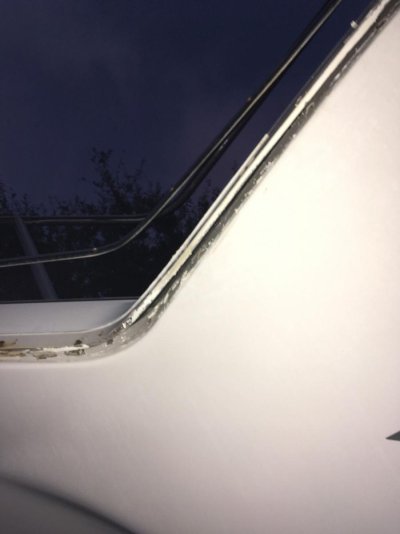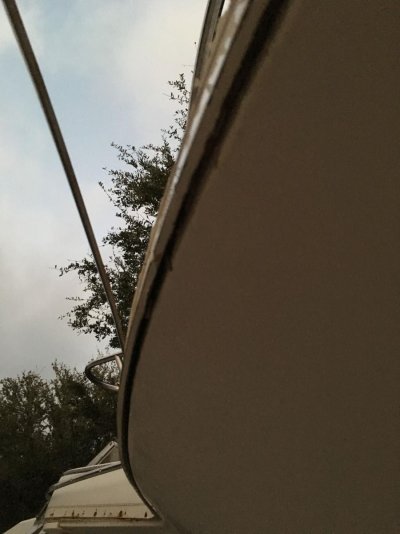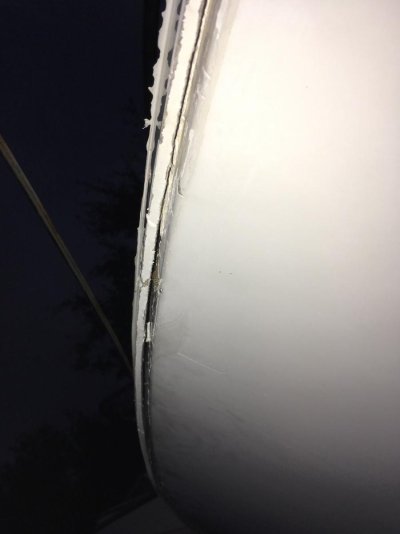Boat is on the hard to do some general maintenance. She's a project boat. Noticed the rub rail on the port side was a bit loosey goosey. Pulled it off and found that the cap was built with an up to 1/2" gap betwixt the cap and the hull. So now I gotta fix it. Options?
-- mix up some epoxy and filler, stuff the gap and seal it off, let it cure then redrill for rub rail?
-- shoot 5200 in the gap, stuff with filler, cure, redrill and caulk.
-- do what the previous owner (or manufacturer) did and caulk the crap out of it.
I like the idea of fiber and epoxy, or even the 5200. But I'm concerned that the cap needs to "flex" a bit. New territory for me. Ideas appreciated.
-- mix up some epoxy and filler, stuff the gap and seal it off, let it cure then redrill for rub rail?
-- shoot 5200 in the gap, stuff with filler, cure, redrill and caulk.
-- do what the previous owner (or manufacturer) did and caulk the crap out of it.
I like the idea of fiber and epoxy, or even the 5200. But I'm concerned that the cap needs to "flex" a bit. New territory for me. Ideas appreciated.




